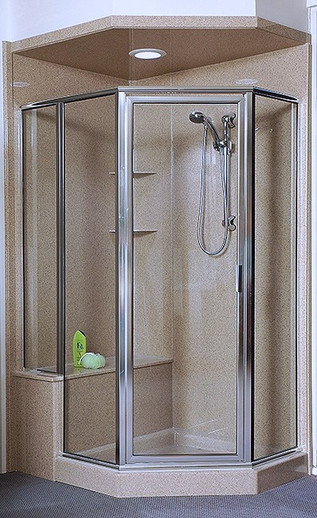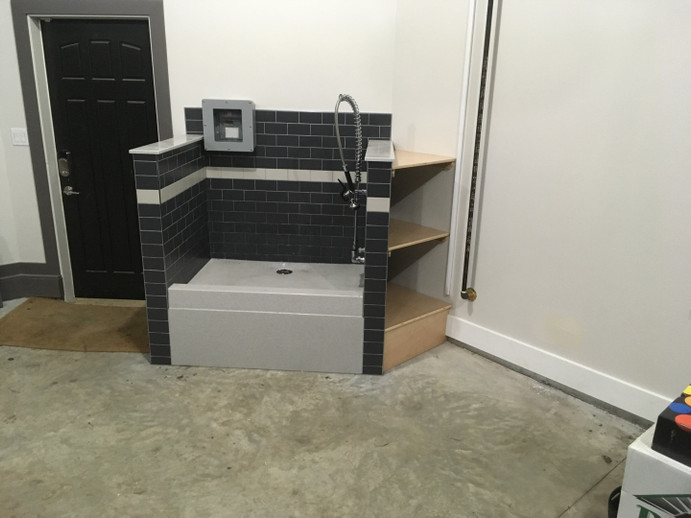Making the Right Choice in Waterproofing your Shower
It is well established that shower leaks are one of the most common, and costly, problems that a homeowner may face. In the past, one would tackle a tile shower installation by going to the hardware store to purchase a 40 mm sheet of CPE (Chlorinated Polyethylene) or PVC (Polyvinyl Chloride) large enough to cover the shower floor.
No instructions would come with this sheet, which is perhaps the problem. How can a person fully understand what they are about to do when there is no process or instruction given?

Throughout my career as a tile setter, I have met several homeowners that had the same mindset on installing a tile shower. Their line of thinking was that if a tile shower is installed in the basement and it leaks, damage will be minimal – the water will simply seep into the ground beneath the concrete slab. In a house without a basement the same reasoning would be put into practice – install the shower above a flat concrete slab.
Another misconception that I faced was that one should never put a shower liner on a second floor, as damage would be severe if it were to leak. With this logic, why depend on your roof to keep you dry when it rains?
While sound in theory, this information does nothing to protect the homeowner in practice. If not properly installed, the basement shower will in fact leak into the bottom plate of the walls and moisture will seep into the adjoining room. Mold and decay that will be unavoidable and in time the shower will need to be replaced. As anyone that has ever had a leak in a shower can attest, the stress, high cost and outright annoyance that comes with replacing a faulty unit is something that should be avoided.
Why then is the traditional PVC or CPE method still used today, if a tile shower is installed at all? What are the alternatives? Why are builders reluctant to install tile showers? The residential tile industry is largely trade driven with low turnover, and inexperienced tile setters learn on the job from more tenured professionals that pass their methods down over time. Builders are reluctant to use the traditional liner method, given its poor track record, but are also equally reluctant to bring in new systems. Factor this in with the explosion of (mis)information available on the Internet, and the task of building or upgrading a ceramic tile shower can be a daunting one.
A solution to the PVC liner problem is to install a solid, one piece shower pan such as the OneLiner. With no folds, creases or floppy sides to worry about, installation is easy and solid.
Recent Posts
-
The Most Important Step In Any Project Reading the Directions
Some of the most common calls I get are after the fact of improper installation, any product we get …2018 Jun 5th -
Custom Bases, Over Sized Shower Pan and Not The Ordinary Shape What Do you Do?
At Dix Systems we have helped the Do It Yourselfer and contractor that have trouble with an out of t …2018 May 16th -
What a neat idea, pet shower in your home or a small stall for your mop bucket.
What an amazing idea having a cultured onyx shower base lifted up so no bending when you clean your …2018 May 11th




